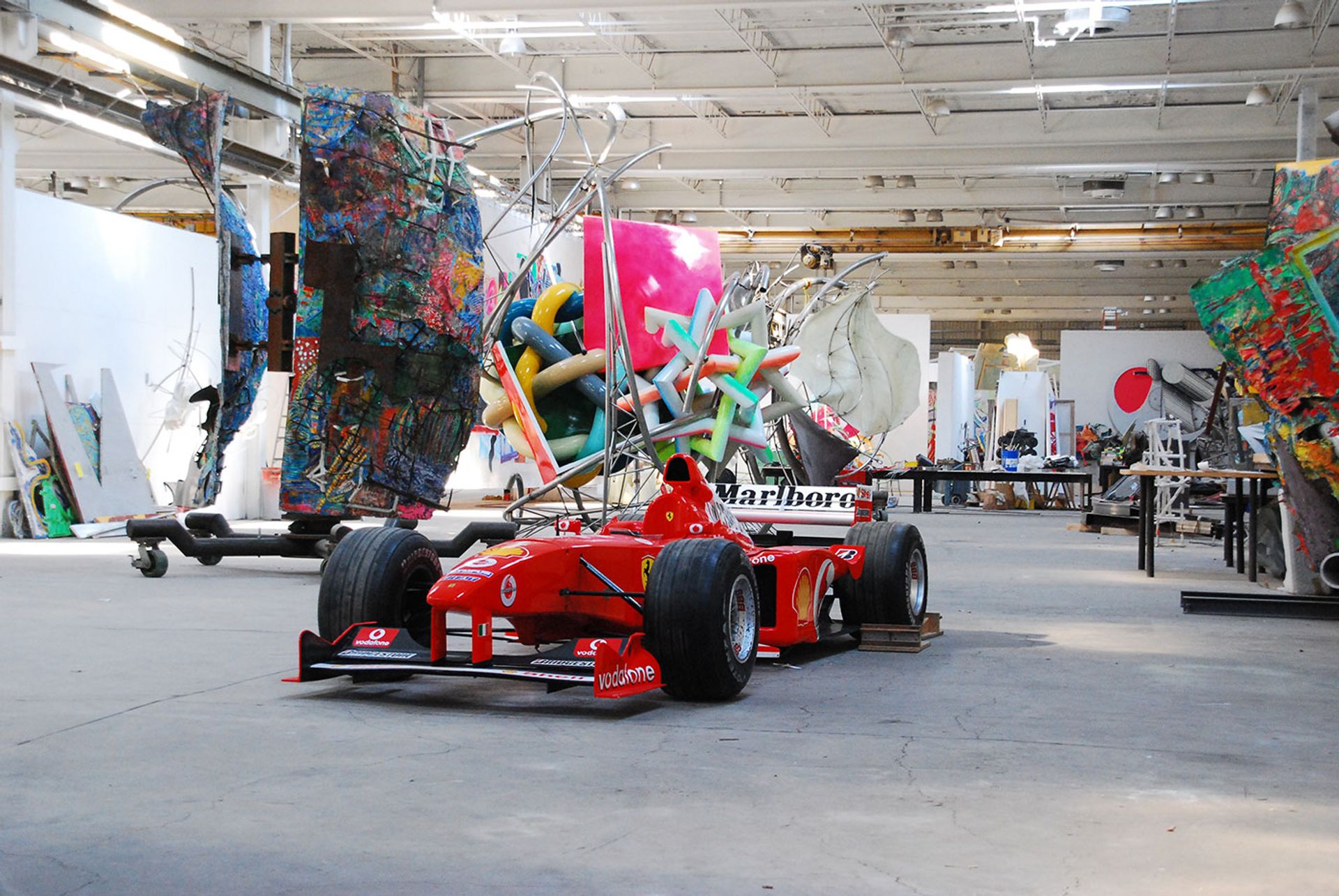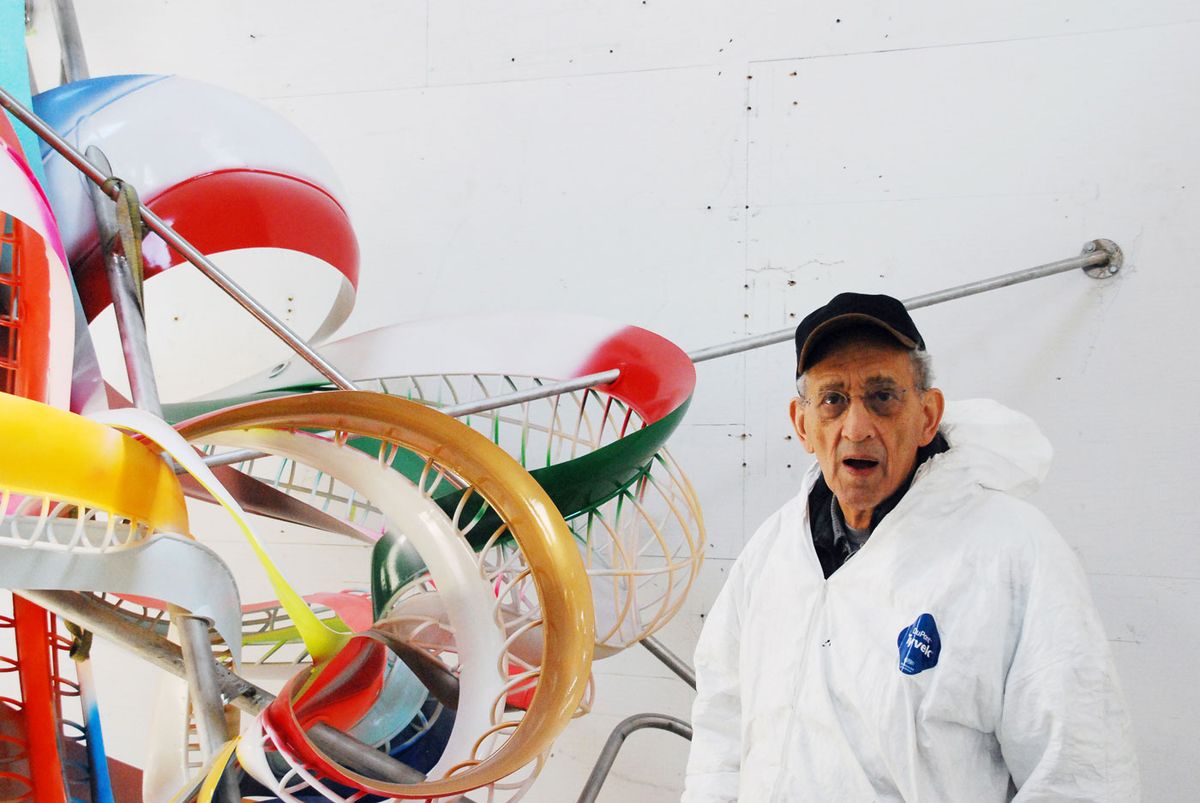Frank Stella, the American sculptor, painter and printmaker, has been celebrated in exhibitions at the Metropolitan Museum of Art, the Princeton University Art Museum, and a travelling show originating at the Arthur M. Sackler Museum at Harvard, among others. He has just completed a large-scale carbon fibre and stainless steel sculpture which is suspended in the new Art Gallery of Ontario’s Frank Gehry-designed addition in Toronto. He is working on a 100ft-long painting/sculptural/architectural installation with architect Santiago Calatrava in Zaragoza, Spain, to be installed in 2010.
While Stella lives in a Richard Meier-designed loft in New York City, he has a stud farm where he breeds and raises thoroughbred horses near his upstate studio. It has a steel-walled enclosure for welding, a pipe-bending machine and spray-painting equipment, as well as large-scale sculptures. These include Stella’s mixed media in fibreglass 1995 Severinda, which is over 27ft long and was shown in the Metropolitan Museum, and huge maquettes for exterior sculptures, such as The Broken Jug (2002), planned for Cherbourg, France.
The Art Newspaper: What was the impetus for your move from downtown Manhattan to rural Rock Tavern over a decade ago? Was it this cavernous space?
Frank Stella: I had a great studio on 13th Street in the East Village, but I wanted to move on and already had this as a warehouse. People don’t drop in, and there are two overhead cranes. It’s not so bad on my back. I guess it’s a warehouse/studio. I can only go up to 20 feet. When the weather is good, we work outside.
While your studio appears packed with work in progress, the spaces seem divided up according to function, with a quasi-conference room setting and a lounge area.
No, it’s not a conference room; it’s a lunch table. Over there, I take a nap.

"It drifted in here": a 2002 model Ferrari Formula 1 car in Stella's studio in Rock Tavern, NY. Stella was a noted fan of motor racing Photograph: Katherine Hardy / The Art Newspaper
What’s the 2002 Grand Prix Marlboro car doing here?
It drifted in here.
Your work bridges painting and sculpture, and veers into architecture. What do you call it?
Actually, call it painting sculpture, whatever you want. Some [of the paintings, such as the 100 ft. work that is destined for Spain] you walk behind. It’s on both sides.
How does the enormous space here have an impact on your art and what you complete?
Basically, I’m working on new ideas: work that is pre-determined and things that are improvised. Sometimes I make parts that could easily find their way into a work. Twenty to 30 pieces get produced, and half leave in a good year. I can’t stay in business if 25% leave. The capital layout [on this studio work] is huge: a lot of pressure.

Stella's studio in Rock Tavern, NY, in February 2009, with a section of Stella's 100ft-long work, The Michael Kohlhaas Curtain, mounted on linen, being prepared for installation wrapped around a ring-shaped structure designed by Santiago Calatrava, in Zaragoza, Spain Photograph: Katherine Hardy / The Art Newspaper
To what degree has the appalling financial climate affected your work?
The last two exhibitions, one in London, the other Berlin, were cancelled. They got cold feet. It’s not good. That’s why so much work is here. But that allows me to keep it, which matters too.
- Frank Stella, represented by Paul Kasmin (P94/633), is one of a number of artists opening their studios as part of the Armory’s VIP programme


